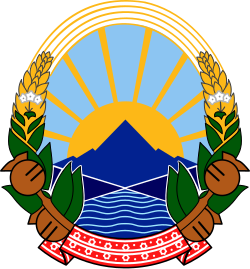| Total population | |
|---|---|
| 1,785 [1] – 11,623 [2] [3] | |
| Regions with significant populations | |
| Prague | |
| Languages | |
| Primarily Macedonian and Czech | |
| Religion | |
| Predominantly Macedonian Orthodox | |
| Related ethnic groups | |
| Macedonians |
| Part of a series on |
| Macedonians Македонци |
|---|
 |
| Culture |
| By country |
| Subgroups |
| Religion |
| Language |
| Other |
There is a small community of ethnic Macedonians in the Czech Republic. Among the refugees of the Greek Civil War who were admitted to Czechoslovakia in the late 1940s, roughly 4,000 were of Macedonian ethnicity; they resettled primarily in the Czech portion of the country. [4] In commemoration of 75 years since the exodus of the child refugees to Czechoslovakia and Poland, an exhibition was held in Krnov in June 2023. [5]
